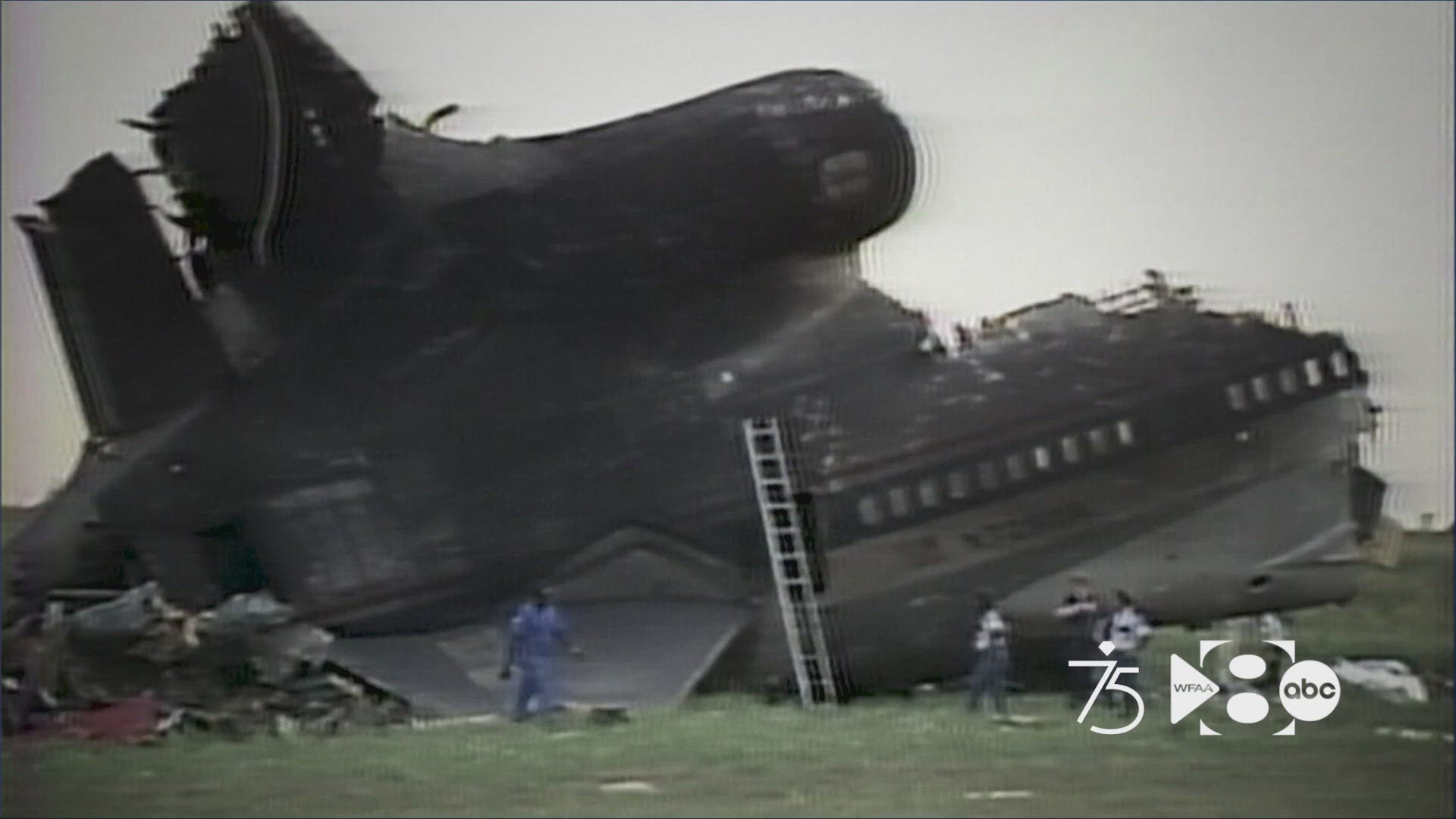DALLAS — The crash of Delta Airlines Flight 191 at DFW Airport wasn't just a tragic event - it was the catalyst for change in aviation and meteorology. It sparked congressional hearings, studies, and sweeping changes in aviation safety.
"That was a once-in-a-career story," said former WFAA photographer Mike Coscia.
Over his nearly half-century career, Mike captured some of the nation’s most significant moments. Among the most haunting was August 2, 1985—the crash of Delta Flight 191. On that fateful day, 137 people lost their lives.
Mike and his reporter rushed to the airport, arriving behind an ambulance, which granted them unprecedented access to the scene.
"I didn't have to say anything... he just waved us in," he said.
Once on the tarmac, they witnessed the aftermath of one of the deadliest aviation accidents in history, including the iconic image of the charred tail of the plane.
"It was almost spiritual in a way... it was so quiet. Over a hundred souls had ascended into heaven from that spot," recalled Coscia.
Watch WFAA's 1985 coverage of the Delta 191 crash:
Delta 191 crashed due to strong microbursts from an otherwise unremarkable storm cell. Tom Bradshaw, a meteorologist with the National Weather Service, explains: "The very strong momentum from the microbursts basically brought the plane right down into the ground."
The plane first struck Highway 114 at 200 miles an hour, colliding with a car and two large water tanks before leaving a trail of devastation. Miraculously, 24 people survived, including Richard Laver, who was 12 years old at the time.
Laver spoke with WFAA on the anniversary of the crash, recalling: "The only thing I remember is the violence, the impact, and my father covering my body."
The disaster of Delta 191 led to significant advancements in aviation safety. Radar technology has greatly improved since 1985, with airports now equipped with wind sensors and specialized weather service units for air traffic control. New Terminal Doppler Weather Radars were placed at airports.
"We know so much more now than we knew in the '80s," says Bradshaw.
Additionally, the FAA now mandates that airplanes be equipped with instruments to detect wind shear, a direct result of the lessons learned from Delta 191. However, one of the most significant developments since 1985 has been pilot training to spot inclement weather to help with on-the-spot decision-making.
"We've learned to have a healthy respect for storms and basically...stay out of them," said Bradshaw.
As the 40th anniversary of the crash approaches, Mike still watches planes take off and land at DFW Airport's Founders' Plaza, forever reminded of that fateful day.

